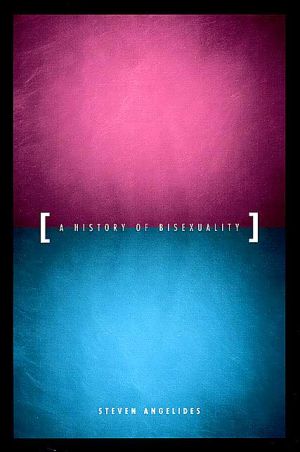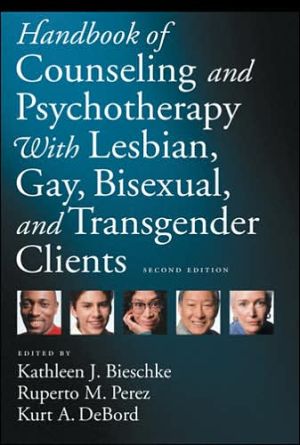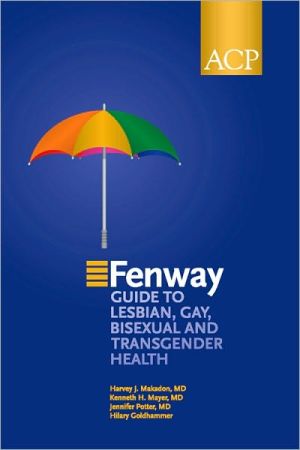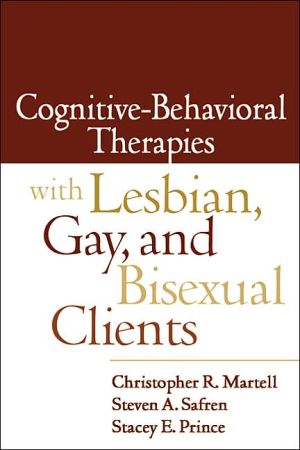A History of Bisexuality
Why is bisexuality the object of such skepticism? Why do sexologists steer clear of it in their research? Why has bisexuality, in stark contrast to homosexuality, only recently emerged as a nascent political and cultural identity? Bisexuality has been rendered as mostly irrelevant to the history, theory, and politics of sexuality. With A History of Bisexuality, Steven Angelides explores the reasons why, and invites us to rethink our preconceptions about sexual identity. Retracing the...
Search in google:
Why is bisexuality the object of such skepticism? Why do sexologists steer clear of it in their research? Why has bisexuality, in stark contrast to homosexuality, only recently emerged as a nascent political and cultural identity? Bisexuality has been rendered as mostly irrelevant to the history, theory, and politics of sexuality. With A History of Bisexuality, Steven Angelides explores the reasons why, and invites us to rethink our preconceptions about sexual identity. Retracing the evolution of sexology, and revisiting modern epistemological categories of sexuality in psychoanalysis, gay liberation, social constructionism, queer theory, biology, and human genetics, Angelides argues that bisexuality has historically functioned as the structural other to sexual identity itself, undermining assumptions about heterosexuality and homosexuality. In a book that will become the center of debate about the nature of sexuality for years to come, A History of Bisexuality compels us to rethink contemporary discourses of sexual theory and politics.
A History of Bisexuality\ \ By Steven Angelides \ University of Chicago Press\ Copyright © 2001 Steven Angelides\ All right reserved.\ ISBN: 0226020908 \ \ \ INTRODUCING BISEXUALITY \ In any case bisexuality merges imperceptibly into simple inversion.\ --Havelock Ellis 1901\ \ \ \ BISEXUALITY--a state that has no existence beyond the word itself--is an out-and-out fraud, involuntarily maintained by some naive homosexuals, and voluntarily perpetrated by some who are not so naive.\ --Edmund Bergler 1956\ \ \ \ It is my opinion that while the word bisexual may have its uses as an adjective . . . it is not only useless but mendacious when used as a noun.\ --John Malone 1980\ \ \ \ I'm not sure that because there are people who identify as bisexual there is a bisexual identity.\ --Eve Kosofsky Sedgwick 1991\ \ \ Doubts about the veracity of bisexuality as an identity are not new. Variously characterized within dominant discourses of sexuality as, among other things, a form of infantilism or immaturity, a transitional phase, a self-delusion or state of confusion, a personal and political cop-out, a panacea, a superficial fashion trend, a marketing tool, even a lie and a catachresis, the category of bisexuality for over a centuryhas been persistently refused the title of legitimate sexual identity. Yet, as is all too familiar to scholars of sexuality, the same cannot be said with regard to homosexuality. Since its invention as a peculiar human species in late-nineteenth-century scientific discourse, the homosexual as a modern identity has been the object of a rigorous, frenetic, indeed paranoid, discursive essentialization. Far from having doubt cast incessantly upon its veritable existence, the homosexual has been mapped, measured, and monitored in what can only be described as an interminable and insane reiteration of the supposed 'essence' and 'truth' of its being. On a much smaller scale, but with as much scientific zeal, has been the cataloging of myriad other psychosexual 'deviations'. From the perverts invented by nineteenth-century sexology to the seemingly endless list of twentieth-century paraphiliacs, Western science has placed sexuality in a privileged relation to truth with regard to human subjectivity. As Foucault put it: "Between each of us and our sex, the West has placed a never-ending demand for truth: it is up to us to extract the truth of sex, since this truth is beyond its grasp; it is up to sex to tell us our truth, since sex is what holds it in darkness." \ \ Curiously, however, the category of bisexuality seems to have been spared the rigors of this "never-ending demand for truth." Bisexuality continues, in fact, to represent a blind spot in sex research. This apparent oversight by our all-consuming regime of sexuality is particularly puzzling in view not only of the rather long history of research suggestive of the prevalence of bisexual practices in most human cultures, but also of the emergence, in many Western countries within the last two decades, of burgeoning and highly politicized bisexual movements. On the surface this may come as no surprise, given the common association of bisexuality with (self ) deception and unreality. Perhaps bisexuality is unnatural, without 'essence' after all? Is it the antithesis of truth, an untruth? Or is it an imaginary or nonexistent state? And what would it mean to answer in the affirmative to these questions: Would bisexuality therefore be without history, even outside of history? And might this explain why so little ink has been spilled establishing its veracity, historicizing its (lack of ) meaning? Opting for this explanatory path is for me, however, wholly unsatisfactory. For one thing, if so little critical attention has been accorded to bisexuality, how can anyone so confidently assume anything about its meaning, let alone arbitrate its 'truthful' existence? \ \ Marjorie Garber's Vice Versa: Bisexuality and the Eroticism of Everyday Life is one of the first comprehensive studies of bisexuality to engage some of these questions. In an encyclopedic account of eroticism within a wide range of cultural and literary texts, Garber sets out not just to put bisexuality on the sexual map, but to challenge common assumptions that have long structured its meaning. Her concern is not with theorizing or politicizing bisexuality as the latest identity "now finding its place in the sun". Instead, she seeks to inquire into what bisexuality can teach us about sexuality in general. The lesson, according to Vice Versa, is that the 'nature' of sexuality cannot be located in the fixed identities of gay and straight. It is, rather, mobile and mutable: The "nature of sexuality . . . is fluid not fixed, a narrative that changes over time rather than a fixed identity, however complex. The erotic discovery of bisexuality is the fact that it reveals sexuality to be a process of growth, transformation, and surprise, not a stable and knowable state of being." Garber urges us to dispense with the hetero/ homosexual opposition as our starting point for understanding sexuality. Why not begin just with the category of sexuality? she asks. Proposing a framework based on the Mobius model, Garber visualizes sexuality in terms of a three-dimensional figure. This kind of "topological space" makes redundant any concept of sexuality as either/or, as "two-versus-one." No longer radically distinct, the categories of heterosexuality and homosexuality flow in and through one another. \ \ Garber goes even further to suggest that, far from being a third sexual identity, bisexuality is a sexuality that "puts into question the very concept of sexual identity in the first place." The logic behind this idea, as I mentioned above, is that she identifies the nature of sexuality to be a kind of unpredictable fluidity, uncontainable within the fixity of hetero/homosexuality. However, this unpredictable fluidity, this 'sexuality', is for Garber none other than bisexuality. That is, in constructing her Mobius model, she actually conflates sexuality with bisexuality, and substitutes the notion of 'sexual identity' with that of bisexual eroticism. The concepts of heterosexuality and homosexuality are thus subsumed by a bisexuality she argues "is neither the 'inside' nor the 'outside' but rather that which creates both." \ \ Anything but immature, peripatetic, erroneous, illusory, unnatural, bisexuality in this scenario is human sexuality itself. By extension, then, bisexuality is coterminous with human 'nature', with 'truth' itself. The effect of Garber's intervention is thus not so much a disruption of what Foucault would call the scientia sexualis--the "procedures for telling the truth of sex"9--although she certainly wants to deconstruct 'truth' in the form of fixed and oppositional sexual identities. Rather, and working within this regime of truth, Garber effectively inverts the terms of the scientia sexualis: the untruth becomes the sole truth. Such a move of reversal is, of course, not without its uses. Like the first part of any deconstructive movement, it is essential to effect a strategic reversal of any binary opposition in question. It is equally important simultaneously to displace the negative term of this opposition from its position of dependency on the positive and to situate the former as the latter's very condition of possibility. This much Garber has done, and the concept of 'sexual identity', and thus the binarism of hetero/homosexuality, may appear on the surface to be momentarily disrupted. Yet it is this very move that leads her to claim bisexuality's status as inherently deconstructive. Bisexuality, proclaims Garber, is but a "sexuality that threatens and challenges the easy binarities of straight and gay." In order to make this claim, however, Garber remains reliant upon the very opposition which underpins that of hetero/homosexuality: (sexual) identity versus (fluid) difference. The only difference is that the hierarchical relationship between the two terms is reversed, difference (which in Garber's model is fluid bisexuality) now elevated at the expense of identity (hetero/ homosexuality). To leave the deconstructive project at this point is a little frustrating, however. In reifying bisexuality as a sexuality, Garber has given it a positive ontological or truth content, even if this content is viewed as fluid, uncertain, and in constant flux. Merely inverting bisexuality's status within conventional figurations of sexual identity, Garber redeploys heteronormative logic and thus remains squarely within the terms of the hetero/homosexual opposition she seeks to deconstruct. \ \ At this point it would appear that Garber's reinvocation of an essentializing oppositional logic comes dangerously close to fulfilling the prophesy of which Eve Sedgwick lamented in an internet discussion list only months before the publication of Vice Versa. In just such a discussion of bisexuality's politicodeconstructive potential, Sedgwick wrote: \ \ There are ways in which the political concept of 'bisexuality' seems to offer a consolidation and completion of an understanding of sexuality that can be described adquately [sic], for everybody, in terms of gender-of-object-choice . . . as though, once you've added "goes for both same and opposite sex" to "goes for same sex" and "goes for opposite sex," you have now covered the entire ground and collected the whole set.\ \ These comments of Sedgwick's rehearse, indeed intensify, the seemingly irresolvable debate as to whether the concept or identity of bisexuality reinforces or ruptures our binary epistemology of sexuality. Both sides of the political divide have received sufficient airing since the mid-1980s. And Sedgwick is certainly not alone with her characterization of what I call the 'impotence' model of bisexuality. Donald Hall, coeditor of a recent collection of essays, RePresenting Bisexualities, agrees: "I . . . especially dislike the term 'bisexual'," he says, "for it inescapably encodes binarism" (11). On the basis of this kind of logic Elisabeth Daumer urges us to resist constructing bisexuality as another sexual identity. For, "rather than broadening the spectrum of available sexual identifications," she too argues that it merely "holds in place a binary framework of two basic and diametrically opposed sexual orientations." \ \ On the other hand, however, these claims of bisexuality's political impotence compete with a chorus of theorists and activists who have been arguing that the politicized category of bisexuality represents a fundamental challenge to the gendered structure of hetero/homosexuality. Bisexual theorist Amanda Udis-Kessler, for instance, argues not only that bisexuals "unintentionally" threaten the "meaning systems by which lesbians, gay men and heterosexuals live," but that bisexuality as a category "inevitably" poses "crises of meaning" for our binary epistemology of sexuality. Like Garber, Udis-Kessler figures bisexuality as inherently deconstructive, subversive, revolutionary, and undermining of the binarized logic and structure of gender and (mono)sexuality. \ \ I have never been comfortable with the 'impotence' model of bisexuality and its rather tidy political prognosis. Nor am I satisfied with the opposing, and rather utopic, position that bisexuality is somehow inherently subversive. Aside from the seemingly obvious fact that within Western culture in general the "easy binarities" of which Garber speaks appear anything but under threat, it strikes me as equally premature to discard the category of bisexuality to the scrapheap of theoreticopolitical sterility; especially in view of its long history of critical neglect within discourses of sexuality. In my view, framing the analysis of bisexuality in binary terms represents a false antithesis. It serves to mystify rather than elucidate the complexity of bisexuality's discursive and political intervention in the 1990s and beyond, just as it misrecognizes the ambiguous and contradictory epistemological history of bisexuality itself. So instead of remaining within the terms of this existing political dispute, I would like in this book to refuse its dichotomous framing and subject it to critical examination by turning to this epistemological history. Just as our political and theoretical analyses of homosexuality required the historicization of the very concept of homosexuality, so too would I suggest that any political and theoretical analysis of bisexuality is impoverished (if not useless) without an adequate account of its historical construction. Yet a sustained and contextualized account of the history of sexuality and bisexuality's place in it is absent not just within the debate, but within our entire archive of historical knowledge. \ \ Bisexual theorist Michael du Plessis has argued recently that in the current climate of sexual theory and politics it is crucial to examine how notions of bisexuality and bisexual identity have "come to be unthought, made invisible, trivial, insubstantial, irrelevant." This imperative is the starting point for this book. A History of Bisexuality explores the complex conjunction of issues framing the discursive relationships between bisexuality and modern sexual identity, between bisexuality and figurations of human 'nature', and between bisexuality and the construction of sexual 'truth'. The question of how bisexuality and bisexual identity have been erased is, I suggest, inextricably bound up with the broader history of bisexuality as an epistemological category. I will analyze how bisexuality as an epistemological category has functioned both to foreclose the articulation of a bisexual identity and to reproduce the hetero/homosexual opposition. \ \ WRITING A QUEER HISTORY OF (BI)SEXUALITY \ \ As indicated by the subtitle, the project of writing a queer history of (bi)sexuality draws heavily on the interlocking fields of gay and lesbian history and queer theory. So what might this form of history writing look like? In order to expound the methodological contours of this approach, it might first be useful to examine how bisexuality has been figured until now within these interlocking disciplinary formations. \ \ Throughout the last two decades or so, the field of gay and lesbian history has expanded rapidly. Histories of sexuality--of homosexuality, and increasingly of heterosexuality--have been and continue to be published at an astonishing rate. Yet, for the most part, bisexuality scarcely figures within this burgeoning historiographical field. At first glance it would appear, then, that bisexuality has said very little, and has very little to say, to this historical archive. However, I would argue that one of the primary reasons for bisexuality's apparent insignificance might be the fact that the defining mark of gay and lesbian history writing has been a methodological reliance on an identity paradigm. Central to this paradigm has been a distinction between sexual behavior and sexual identity. Constructionist historians, cautious of conflating homosexuality and homosexual identity, have found it useful to examine the history of sexuality through this distinction. As a guiding methodology, this has been effective, as Jeffrey Weeks has observed, as a way of distinguishing "between homosexual behaviour, which is universal, and a homosexual identity, which is historically specific." \ \ For reading bisexuality, however, this approach introduces conceptual problems of its own. While homosexual identity is not universalized, a homosexual act is. The problem of identity is thus only deferred and displaced. Neither an act nor a palpable cultural identity--at least until the late 1960s in the case of the latter--bisexuality merely vanishes into the categories of hetero- or homosexuality. The identity paradigm is thereby reified and bisexuality is completely erased from the historical record. Chris Cagle describes this approach as "monosexual gay historiography." Where bisexuality does rate a mention, it is almost always rendered an epistemological and incidental by-product, aftereffect, or definitional outcome of the opposition of hetero/homosexuality. It is therefore not seen as in any way significant to the diachronic construction of this opposition. For instance, as historian George Chauncey has noted in his most recent work, "Even the third category of 'bisexuality' depends for its meaning on its intermediate position on the axis defined by those two poles." Erwin Haeberle, in his introduction to the recent anthology Bisexualities, reaches a similar but more historically inflected conclusion: the modern concept of bisexuality "did not arise," indeed, "could not come into existence," he argues, until after "the simple opposition" of homo/heterosexuality had been invented. \ \ \ \ Continues... \ \ \ \ Excerpted from A History of Bisexuality by Steven Angelides Copyright © 2001 by Steven Angelides. Excerpted by permission.\ All rights reserved. No part of this excerpt may be reproduced or reprinted without permission in writing from the publisher.\ Excerpts are provided by Dial-A-Book Inc. solely for the personal use of visitors to this web site. \ \
Acknowledgments1Introducing Bisexuality1Pt. 1Constructing Sexual Identity2Science and the Invention of (Bi)Sexuality233"The Unsolved Figure in the Carpet"494The Pink Threat71Pt. 2Deconstructing Sexual Identity5The Repressed Returns1076Sexuality and Subjection1327The Queer Intervention1628Beyond Sexuality190Notes209Bibliography259Index277
\ Archives of Sexual BehaviorThis book is suited to advanced scholars of sexuality, primarily those interested in theory, representation, and ways of knowing. It is a valuable criticism of the historical understandings of sexuality that provides novel re-readings of many of the classics of the theory of sexuality. . . . If the reader approaches the text prepared for its dense theoretical content, one will be rewarded with a well thought-out and novel approach to the modern system of sexuality.”\ — M.M.L. Arthur\ \ \ \ \ \ Cultural Studies ReviewAngelides presents a provocative and ambitious account of bisexuality from its modern origins in theories of evolution, through sexology and psychoanalysis, to its scant mentions in the canon of queer theory. . . . In its breadth and attention to historical detail, A History of Bisexuality represents a significant advance on earlier work. In particular, the book’s central claim that the erasure of bisexuality is necessary for the production of modern sexuality has significant implications for contemporary and historical studies of sexuality.”\ — Lachlan MacDowall\ \ \ \ Archives of Sexual Behavior“This book is suited to advanced scholars of sexuality, primarily those interested in theory, representation, and ways of knowing. It is a valuable criticism of the historical understandings of sexuality that provides novel re-readings of many of the classics of the theory of sexuality. . . . If the reader approaches the text prepared for its dense theoretical content, one will be rewarded with a well thought-out and novel approach to the modern system of sexuality.”\ \ \ \ \ \ Gender, Place and Culture“There is much to recommend in the book. It introduces the social science study of bisexuality, working through the current literature tidily. . . . It then works clearly through its two principal case studies, psychoanalysis and sexual politics, before drawing the debate together and simultaneously broadening it out through the discussion of the new sexual sciences. It has the consistent voice of a single-authored text. . . . It also finds a measured, even sober way to deal with bisexuality, resisting the hyperbole of what we might see as a willfully ‘postmodern’ brand of theorizing.”\ \ \








